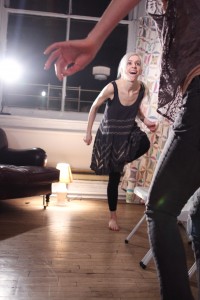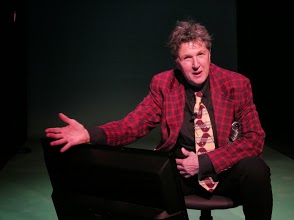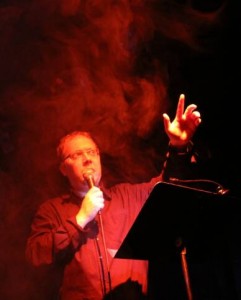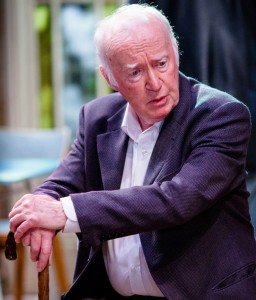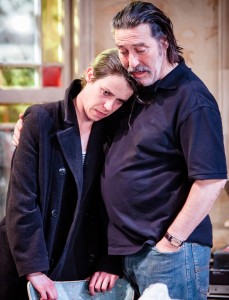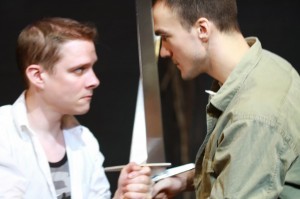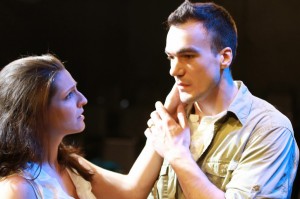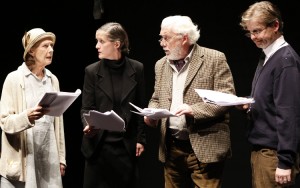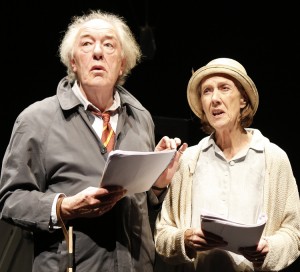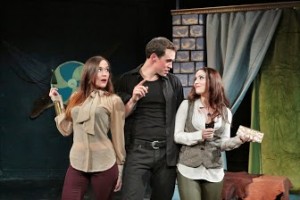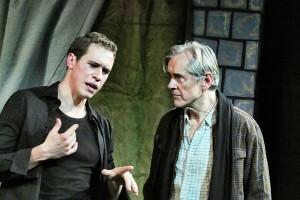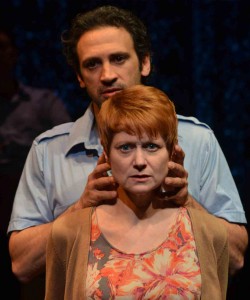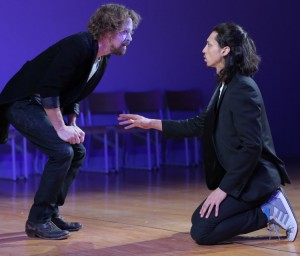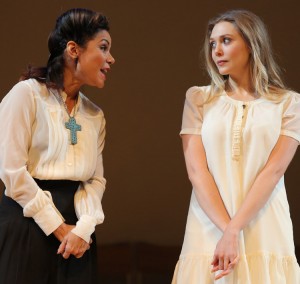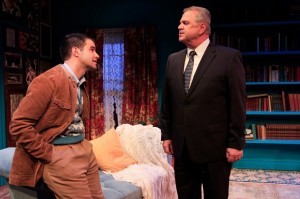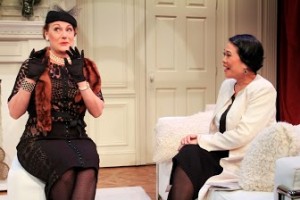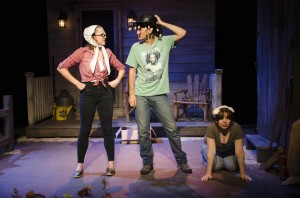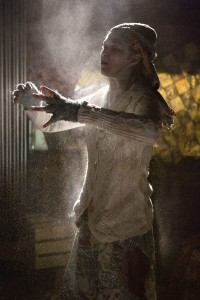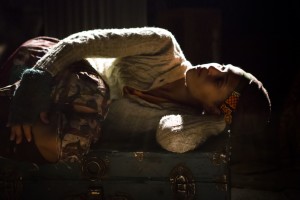As one of three major productions this year, The H.A.D.L.E.Y. Players and New Heritage Theatre Group presented The Kitchen, written by Roger Parris and directed by Arthur French, at The Poet's Den on 309 East 108th Street. Featuring an all-black cast, the play is set during the 1950s in Harlem, where a boardinghouse landlord faces the predicament of allowing an ex-tenant a safe haven while he faces life or death. "Grandma" serves as a mother figure to everyone in the house — her kitchen their meeting place. Originally played by Louise Mike, Johnnie Mae steps in as Grandma after Mike sprained her ankle. Although she reads from a script, even using it as a prop, Mae did an excellent job conveying the message: blood is not always thicker than water.
During the opening scene, Taylor (Craig Anthony Bannister) is the topic of discussion among the tenants Ivan (Albert Eggleston), Muriel (Kimberlee Monroe) and Grandma’s cousin Philip (Ward Nixon) on a Saturday morning. Taylor, an ex-tenant, is a known gambler. After giving all his winnings to the woman he loved, Taylor aims to get back on his feet after she flees the city with all his loot. During breakfast, Philip and Grandma have a pivotal fall-out, which confuses the audience — there’s really no basis but is the turning point of the play.
That evening, Taylor shows up at Grandma’s covered in blood, seeking refuge from the neighborhood hustler Raymond Peaks (Leopold Lowe). The scene is unseen, but Taylor describes the scuffle at the local bar; gambling, drugs, liquor and the badmouthing of his lover play their parts in Peaks stabbing him. It’s a bit unclear why Peaks is trying to murder Taylor; the story isn’t conveyed, but Grandma harbors him until he can plan an escape from the city. While at the boardinghouse, Taylor reflects to Muriel where he went wrong, acknowledging how he “always liked the fast life,” teaching her how to shoot craps. Muriel, just released from an asylum, conserves Taylor’s location, keeping him company during the day and playing Grandma’s numbers at night.
The show begins to pick up towards the second half where the more interesting scenes ironically happen outside of the kitchen between the male cast members. Over a bottle of whiskey, Peaks, Philip and Ivan are coming from the bar — Peaks hints at stabbing Taylor and tips the gents that he’s after him. The two men still have no idea Taylor’s hiding out in their own home; Ivan is unfazed but Philip is intrigued. Philip and Peaks appear to be in cahoots — Philip is leaving for South Africa and bringing Peaks back diamonds and possibly narcotics.
In the next scene, Ivan relays the conversation he had with Peaks and Philip to Grandma and Muriel. Taylor is listening in the adjacent room. The girls continue to act aloof while the three of them celebrate Ivan’s birthday over a bottle of bourbon. Ivan tells Grandma she and Philip should reconcile to appreciate the meaning of family.
The next morning, Philip drops by and Grandma apologizes for losing her temper. He accepts but leaves with a piece of paper — a numbers slip with Taylor’s name and the date of a few days prior. The jig is up. He immediately informs Peaks that Taylor’s at the boardinghouse, on a park bench — a rather enjoyable scene with excellent lighting. They begin to conspire how Peaks can get into the house, posing a robbery to kill Taylor. Peaks asks why Philip would set up his cousin and he admits jealousy.
In the last scene, Philip is able to rig the door for Peaks and leaves for South Africa immediately after, to avoid capture. Peaks holds Grandma, Muriel and Taylor at gunpoint and with an unexpected twist, Muriel stabs Peaks to death; causing her to slip into a mental state that lands her back into the asylum.
The ending seems a bit rushed as they cut to three months later. Taylor leaves for Washington, D.C. to stay with his brother. Ivan brings Muriel to the house to visit Grandma; she hasn’t spoken since the incident, but after Grandma gives her a pair of dice left by Taylor, she instantly becomes herself again and the lights dim.
This show is very predictable in terms of racial issues and how they trigger thoughts of the time, but there isn’t much happening throughout the play besides the major scenes described. Centered around “the kitchen,” the only reference made is a spiel by Ivan and why it’s his favorite place. The story is good, but difficult to follow; the timing is a bit off and there are a few lines said with no transition, lead-up or explanation. However, the overall production is enjoyable, offering some comic relief and reputable acting.















